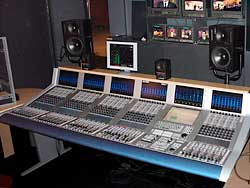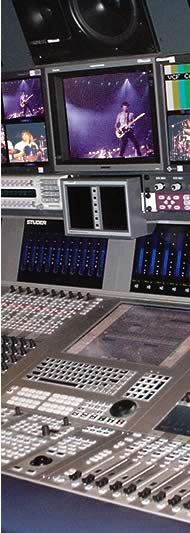Z-Systems has introduced the latest addition to its highly-regarded series of Digital Detangler Pro™ Audio Routers.
The new z-256.256r Detangler Pro enables recording studios and post facilities studios to integrate and reconfigure their digital audio workplace. The unit accommodates up to 256 stereo/two-channel inputs, routing in any combination to a total of 256 outputs.
Asynchronous sources and destinations can be either 24-bit AES/EBU or S/PDIF format, at sampling rates to 192 kHz, and beyond. I/O crosspoint assignments can be selected via a dedicated serial port, using either Z-Systems’ dedicated hardware remote or networked Mac OS and Windows control software. The z-256.256r is modular in increments of 16×16.
“Our z-Series Digital Audio Routers are designed to eliminate the problem of interconnecting converters, effects processors, recorders, workstations, etc., that operate at different sampling rates and use different digital I/O formats,” explains Z-Systems president Glenn Zelniker.”
The remote control and computer interfaces allow the creation of multiple I/O presets, or salvos, that can later be recalled for instant reconfiguration.
“There are many different ways a studio or large installation might need to interconnect a number of digital sub-systems, recorders and playback sources,” Mr. Zelniker continues. “For example, a specific source might need to be connected to a targeted DAT machine, a workstation, a hard-disk recorder or a D-to-A converter.”
“Furthermore, if a single source needs to feed multiple destinations at the same time – for example, an A/D converter connected to several recorders, a workstation and a D-to-A converter for monitoring – daisy-chaining these destination devices can be unsafe and unreliable. The new large-format z-256.256r solves these and other problems.”
Rear-panel D-sub connectors require breakout cables identical in pin-out to the DB25-to-XLR breakout cables used by TASCAM DA-Series MDM Eight-tracks and related units. Z-Systems supplies pin-out designations or pre-fabricated AES/EBU breakout cables.


 Jean-Louis Nathan, VCF’s director of audio, explains the choice of the Vista 7: “We chose Studer because it satisfies our three main criteria – reliability, flexibility and good ergonomics. Reliability is vital because we have many live broadcasts and nowadays TV stations do not accept any failures whatsoever. We know that the Vista 7, although it’s a new concept, is based on D950 technology which has largely proved its reliability.”
Jean-Louis Nathan, VCF’s director of audio, explains the choice of the Vista 7: “We chose Studer because it satisfies our three main criteria – reliability, flexibility and good ergonomics. Reliability is vital because we have many live broadcasts and nowadays TV stations do not accept any failures whatsoever. We know that the Vista 7, although it’s a new concept, is based on D950 technology which has largely proved its reliability.”